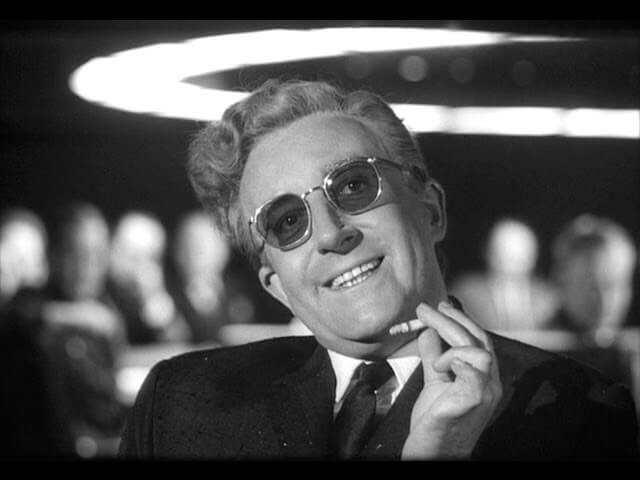Production designer Ken Adam shares war stories from Dr. Strangelove

German-born production designer Ken Adam, perhaps best known for his set design work on such classic James Bond films as Goldfinger, Thunderball, and Diamonds Are Forever, died at the age of 95 of Thursday. One of Adam’s greatest professional triumphs came from his work on Stanley Kubrick’s 1964 Cold War “nightmare comedy,” Dr. Strangelove Or: How I Learned To Stop Worrying And Love The Bomb. He talked about his experiences with Kubrick, candidly and with great humor, in a 2000 documentary by David Naylor entitled Inside Dr. Strangelove, originally made as a DVD extra. The interview with Adam is the highlight of the 46-minute film, which is well worth revisiting in the wake of the designer’s death.
Adams’ professional relationship with Kubrick began when the latter decided to move the production to London’s Shepperton Studios, a facility capable of housing the enormous, ambitious sets he had in mind for the film. A “frustrated pilot” himself, Kubrick was “fascinated” by Adam’s record as a wartime fighter pilot, and the two really got to know each other when they carpooled to Shepperton each day in Adam’s super-powered Jaguar. A nervous Kubrick, who already had a reputation as being a difficult employer, insisted that Adam keep his speed under 30 miles per hour, an experience Adam describes as “miserable.” Things seemed to go swimmingly between the designer and the director at first, until Kubrick insisted that Adam simplify his design of the famous War Room. “I tried to calm down,” Adam says, “by taking a walk on the grounds of Shepperton Studios.” The finished, Kubrick-approved set required the work of 150 tradesmen and measured 130 feet long, 100 feet wide, and 35 feet high. The set’s notorious “big board” required over 10 miles of electrical cbles.
Equally problematic was creating a realistic interior for the Leper Colony, the B-52 bomber that figures prominently in the film. Obviously, the military wasn’t going to help Kubrick out by giving away its secrets, so the production team had to rely on a photograph on the cover of a book called Strategic Air Command by Mel Hunter. Adam was more than happy to let art director Peter Murton handle the creation of the various switches, lights, and gauges of the plane’s cockpit. But the team did its job all too well, as Adam related:
The publicity team invited some American Air Force personnel to look at the shooting we did, and they literally went white when they saw the inside of the B-52 bomber. The interior was absolutely correct, even to the little black box, which was the CRM [a fictional piece of radio equipment]. So the next day, I got a memo from Stanley. He hopes that I’ve got all my research from legal sources or justifiable sources, because otherwise, I and he could be in serious trouble with a possible investigation by the FBI.